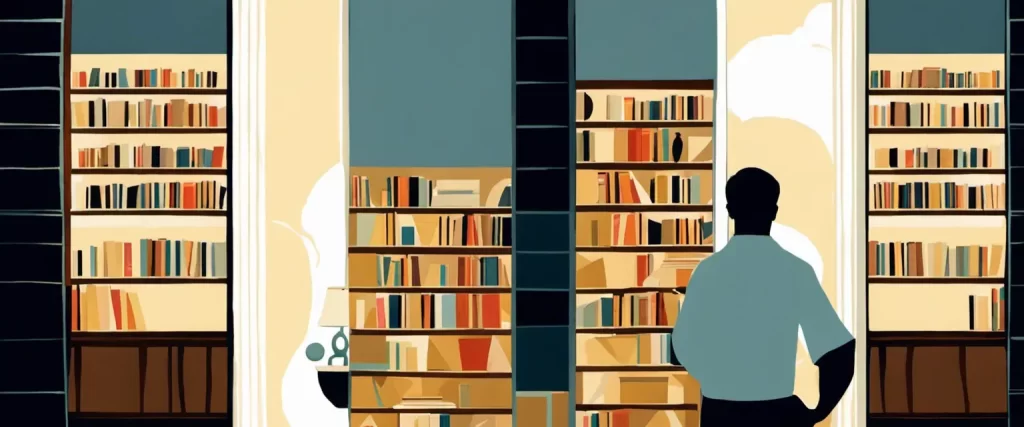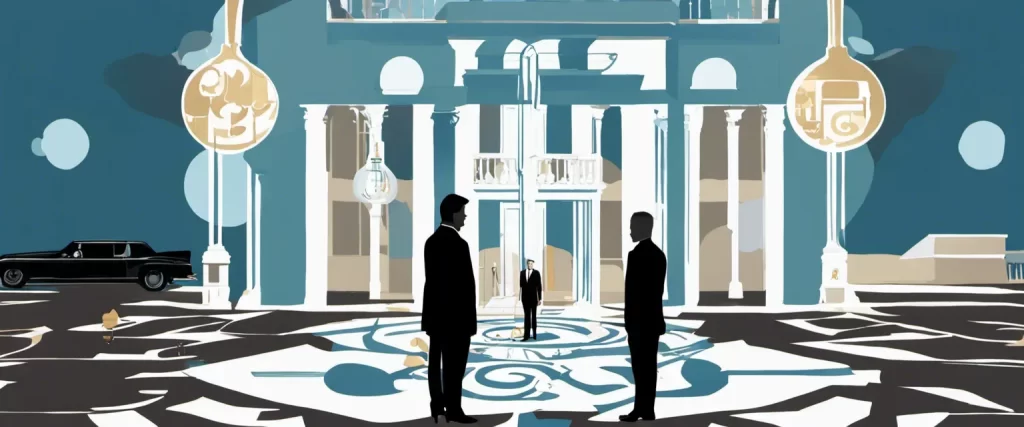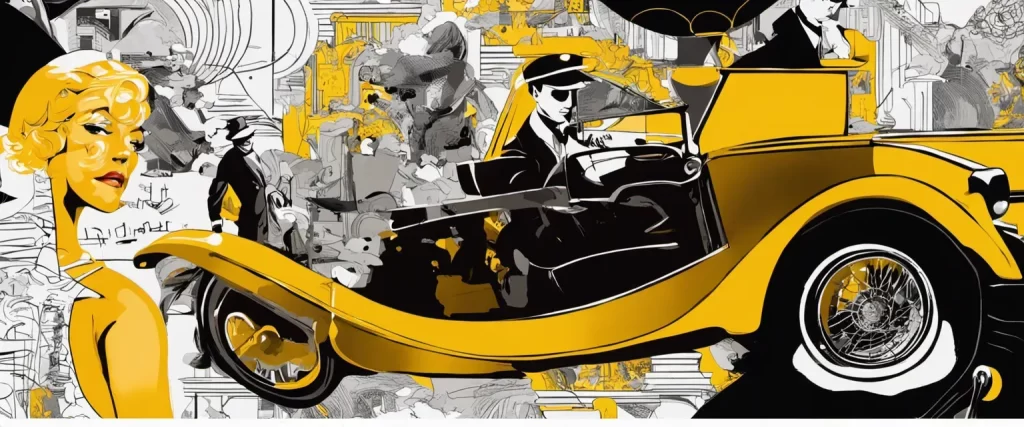
What is the message of The Great Gatsby?
The message of “The Great Gatsby” is a complex one, open to interpretation. However, some common interpretations of the novel’s message include:
1. The American Dream: The novel critiques the idea of the American Dream, which suggests that anyone can achieve success and happiness if they work hard enough. F. Scott Fitzgerald argues that the pursuit of material wealth and status often leads to emptiness and disillusionment.
2. Corruption of the American Dream: The novel suggests that the pure ideals of the American Dream are corrupted by greed, materialism, and the pursuit of excessive wealth. Gatsby’s pursuit of Daisy and his extravagant lifestyle are portrayed as ultimately hollow and unfulfilling.
3. Illusion vs. Reality: “The Great Gatsby” explores the themes of illusion and reality. The characters in the novel often create false identities or lives to hide their true selves. Gatsby, in particular, constructs an elaborate facade to win over Daisy, but this artificially constructed identity ultimately leads to his downfall.
4. The Decay of the American Dream: The novel also portrays the decay and decline of the American Dream during the 1920s. The characters’ hedonistic lifestyles, moral corruption, and reckless pursuit of pleasure contribute to the sense of decay and the ultimate tragedy of the story.
5. The Emptiness of Wealth and Status: Fitzgerald suggests that wealth and status are ultimately empty pursuits. Despite Gatsby’s enormous wealth, he remains unfulfilled and lonely. The novel highlights the superficiality and shallowness of the upper class, and how their obsession with appearances leads to a lack of genuine connection and happiness.
It is important to note that while these interpretations are commonly discussed, “The Great Gatsby” is a rich and layered novel that can be understood in various ways, leading to different insights and interpretations.
Why is the book The Great Gatsby considered a classic?
The Great Gatsby is considered a classic for several reasons:
1. Literary Merit: F. Scott Fitzgerald’s writing style is renowned for its elegance, symbolism, and vivid descriptions. The novel’s language and prose are often praised for their brilliance. Fitzgerald’s ability to capture the essence of the Jazz Age and the characters’ inner struggles adds depth to the story.
2. Timeless Themes: The novel explores universal themes that resonate with readers across different generations. It addresses the American Dream, wealth, love, social class, identity, and the illusion of happiness. These themes remain relevant and thought-provoking even today.
3. Characterization: The characters in The Great Gatsby are complex and multi-dimensional. Jay Gatsby, the enigmatic protagonist, epitomizes the pursuit of the American Dream and the pitfalls that come with it. The nuanced portrayal of each character reflects their flaws, dreams, and desires, making them believable and relatable.
4. Critique of Society: Fitzgerald’s critique of the American Dream and the materialistic society of the 1920s is a prominent aspect of the novel. The characters’ excessive lifestyle and shallow pursuits highlight the emptiness and corruption of the wealthy elite. This critique resonated during the time of its publication and continues to do so today.
5. Historical Context: The Great Gatsby provides a snapshot of the Roaring Twenties, a significant period in American history characterized by extravagant parties, social upheaval, and economic change. It offers readers a glimpse into the social dynamics, cultural shifts, and moral decay of the time, making it a valuable piece of historical fiction.
Overall, The Great Gatsby is considered a classic due to its masterful writing, timeless themes, complex characters, social critique, and its ability to capture an era in American history.
Is there a main theme in The Great Gatsby?
Yes, the main theme in “The Great Gatsby” is the American Dream and its corruption. The novel explores the idea of the American Dream, which is the belief that anyone can achieve success and attain happiness through hard work and determination. However, the characters in the book, particularly Jay Gatsby, demonstrate that this dream is often elusive and can lead to moral decay, emptiness, and tragedy. The novel also delves into themes of wealth, social class, love, and the pursuit of happiness.

Is Gatsby a celebration or a criticism of the American Dream?
“The Great Gatsby” by F. Scott Fitzgerald can be seen as both a celebration and a criticism of the American Dream. The novel explores the concept of the American Dream through the character of Jay Gatsby, who becomes wealthy in his pursuit of success and happiness.
On one hand, the novel celebrates the idea of achieving wealth and success through hard work and determination. Gatsby symbolizes the embodiment of the American Dream, as he rises from a poor background to become a millionaire. His extravagant parties, opulent mansion, and flashy lifestyle convey the allure and glamour associated with the Dream. Gatsby’s relentless pursuit of a better life and his unwavering belief in the possibility of reinvention are celebrated as quintessential American qualities.
However, the novel also presents a scathing critique of the illusionary nature of the American Dream. It highlights the corrupt and superficial aspects of Gatsby’s wealth and the society surrounding him. The characters in the novel are consumed by materialism, social status, and superficiality, ultimately resulting in moral decay and disillusionment. The novel’s tragic ending and the characters’ empty lives serve as a critique of the notion that material success guarantees fulfillment and happiness.
In conclusion, “The Great Gatsby” both celebrates and criticizes the American Dream. It acknowledges the allure and potential for self-improvement that the Dream embodies, but also exposes its pitfalls and the moral corruption that can occur in its pursuit.
How much of The Great Gatsby is based on real lives?
“The Great Gatsby,” written by F. Scott Fitzgerald, is a work of fiction. However, it is often evident that Fitzgerald drew inspiration from real-life experiences and people to create the characters and settings in the novel. While there are no exact parallels between the characters and events in “The Great Gatsby” and real individuals, it is believed that Fitzgerald incorporated elements from his own life and observations of the wealthy elite during the Roaring Twenties. The lavish parties, extravagant lifestyles, and social hierarchy depicted in the novel were inspired by Fitzgerald’s interactions with the upper class of the time. Nonetheless, it is important to note that “The Great Gatsby” remains a fictional work.
Why do people excuse the racism in The Great Gatsby?
There could be several reasons why some people may excuse or overlook the presence of racism in “The Great Gatsby,” a novel written by F. Scott Fitzgerald set in the 1920s. Here are a few possible explanations:
1. Historical context: “The Great Gatsby” is set during the 1920s, a time when racial discrimination and segregation were deeply embedded in American society. Some readers may argue that racism is a reflection of the prevalent attitudes and norms of that era, and thus see it as a realistic portrayal rather than an endorsement of racism.
2. Focus on other themes: The novel primarily explores themes such as wealth, class, and the corruption of the American Dream. Some readers may argue that the central themes overshadow the instances of racism, causing them to be overlooked, dismissed, or seen as less significant.
3. Lack of awareness: Some individuals may not closely analyze the racial dynamics within the book, thus failing to recognize or acknowledge the instances of racism. This lack of awareness may stem from a lack of education or understanding about systemic racism and its historical context.
4. Individual perspective: People bring their own personal biases, experiences, and beliefs when engaging with literature. Some individuals may hold racial biases themselves or lack a critical lens when it comes to racial issues, making them more likely to downplay or excuse instances of racism in the novel.
However, it is important to note that excusing or overlooking racism in any form is not acceptable. Critically analyzing and acknowledging the presence of racism in literature, including “The Great Gatsby,” helps foster a better understanding of societal issues and promotes discussions on racial equality and justice.
Why is the book The Great Gatsby considered a classic?
The book “The Great Gatsby” by F. Scott Fitzgerald is considered a classic for several reasons:
1. Mastery of writing style: Fitzgerald’s prose is known for its elegance, lyricism, and vivid descriptions. The book showcases his ability to craft evocative sentences and create a distinct mood and atmosphere that immerses readers in the story.
2. Exploration of the American Dream: “The Great Gatsby” delves into the concept of the American Dream and the pursuit of wealth, success, and happiness. It examines the disillusionment and moral decay that often accompany the pursuit of materialistic desires.
3. Timeless themes: The novel explores timeless themes such as love, ambition, social status, and the corruption of the American Dream that resonate with readers across different generations. It offers insight into human nature and the complexities of relationships, making it relevant to readers throughout the years.
4. Examination of the Jazz Age: Set in the 1920s, known as the Jazz Age or the Roaring Twenties, the book captures the spirit of the era and serves as a critique of the excessive materialism, hedonism, and moral emptiness prevalent during that time.
5. Complex characters: “The Great Gatsby” features well-developed and multi-dimensional characters who are flawed, intriguing, and relatable. The enigmatic Jay Gatsby, the narrator Nick Carraway, and the complex relationships between characters all contribute to the enduring appeal of the novel.
6. Social commentary: The book provides a glimpse into the social and cultural landscape of 1920s America, reflecting the excesses, superficiality, and moral decadence present in society. It offers a critique of the Jazz Age and the underlying issues in American society during that period.
These factors, among others, have secured “The Great Gatsby” its status as a literary classic that continues to be taught in schools, discussed by scholars, and enjoyed by readers worldwide.

What is the best part of The Great Gatsby?
The best part of The Great Gatsby is subjective and may vary from reader to reader. However, one commonly appreciated element of the novel is its vivid and rich descriptions of 1920s America, particularly the extravagant parties and lavish lifestyle of the upper class. Another notable aspect is the portrayal of the enigmatic Jay Gatsby and his passionate pursuit of the American Dream, creating a character who encapsulates the hopes, desires, and illusions of the era. Ultimately, it is up to individual interpretation and personal preference to determine the “best” part of the novel.
How does The Great Gatsby reflect America in the twenties?
The Great Gatsby, written by F. Scott Fitzgerald, is a novel that provides a vivid portrayal of America in the 1920s, also known as the Jazz Age or the Roaring Twenties. Here are some ways in which the novel reflects the characteristics and values of American society during that time:
1. The pursuit of the American Dream: The Great Gatsby explores the theme of the American Dream and its corrupting influence. Jay Gatsby, the protagonist, represents the individual who strives to achieve success and wealth in order to attain happiness and social status. This reflects the rampant materialism and the idea that anyone could achieve success through hard work and determination, which were prevalent during the 1920s.
2. Excessive wealth and conspicuous consumption: The novel depicts the extravagant lifestyles of the wealthy individuals in the 1920s, characterized by their extravagant parties, luxurious possessions, and lavish spending. These excesses reflect the booming economy of the time, fueled by industries like the automobile industry and the stock market, which led to a divide between the “old money” and the “new money” individuals.
3. The Prohibition Era: The Great Gatsby also presents the socio-cultural backdrop of the Prohibition Era, when the sale and consumption of alcohol were banned. However, this did not stop people from indulging in illegal drinking activities. The novel highlights the prevalence of underground speakeasies, secret parties, and bootlegging, which were common during the 1920s.
4. Changing roles of women: The novel reflects the shifting roles and attitudes towards women in the 1920s. Characters like Jordan Baker and Daisy Buchanan represent the liberated “new woman,” who were more independent, assertive, and embraced the freedom offered by the changing times. However, the novel also portrays the limited options available to women, as Daisy is trapped in an unhappy marriage with Tom Buchanan.
5. The decline of traditional values: The Great Gatsby depicts a society that is characterized by a lack of moral values, social decay, and the pursuit of pleasure. The characters engage in extramarital affairs, deception, and shallow relationships, reflecting the hedonism and moral relativism prevalent during the 1920s.
Overall, The Great Gatsby reflects the excesses, contradictions, and cultural shifts of America in the 1920s, making it a quintessential novel of the time.
Book Recommendation for the people who loved The Great Gatsby by Francis Scott
1. “The Catcher in the Rye” by J.D. Salinger – This classic coming-of-age novel explores the disillusionment of youth, similar to the themes found in “The Great Gatsby.” It offers a poignant and introspective narrative.
2. Fahrenheit 451″ by Ray Bradbury – Like “Animal Farm,” this dystopian novel critiques societal conformity and the dangers of censorship. It provokes thought and reflection on the state of society.
3. Brave New World” by Aldous Huxley – Another dystopian novel, it presents a future society where personal freedom and individuality are sacrificed for stability and conformity. It shares themes of societal critique with both “Animal Farm” and “The Great Gatsby.
4. “The Catch-22” by Joseph Heller – This satirical novel examines the meaninglessness and absurdity of war, much like the critique of power and corruption found in “Animal Farm.” It combines humor and criticism in a similar fashion to the works of Orwell.
5. The Sun Also Rises” by Ernest Hemingway – Set in post-World War I Europe, this novel explores the lost generation and their aimless existence. It delves into themes of disillusionment, love, and the search for purpose, resonating with the character-driven narration of “The Great Gatsby.”

3 thoughts on “Unveiling the Secrets: 10 Burning Questions about The Great Gatsby Answered”